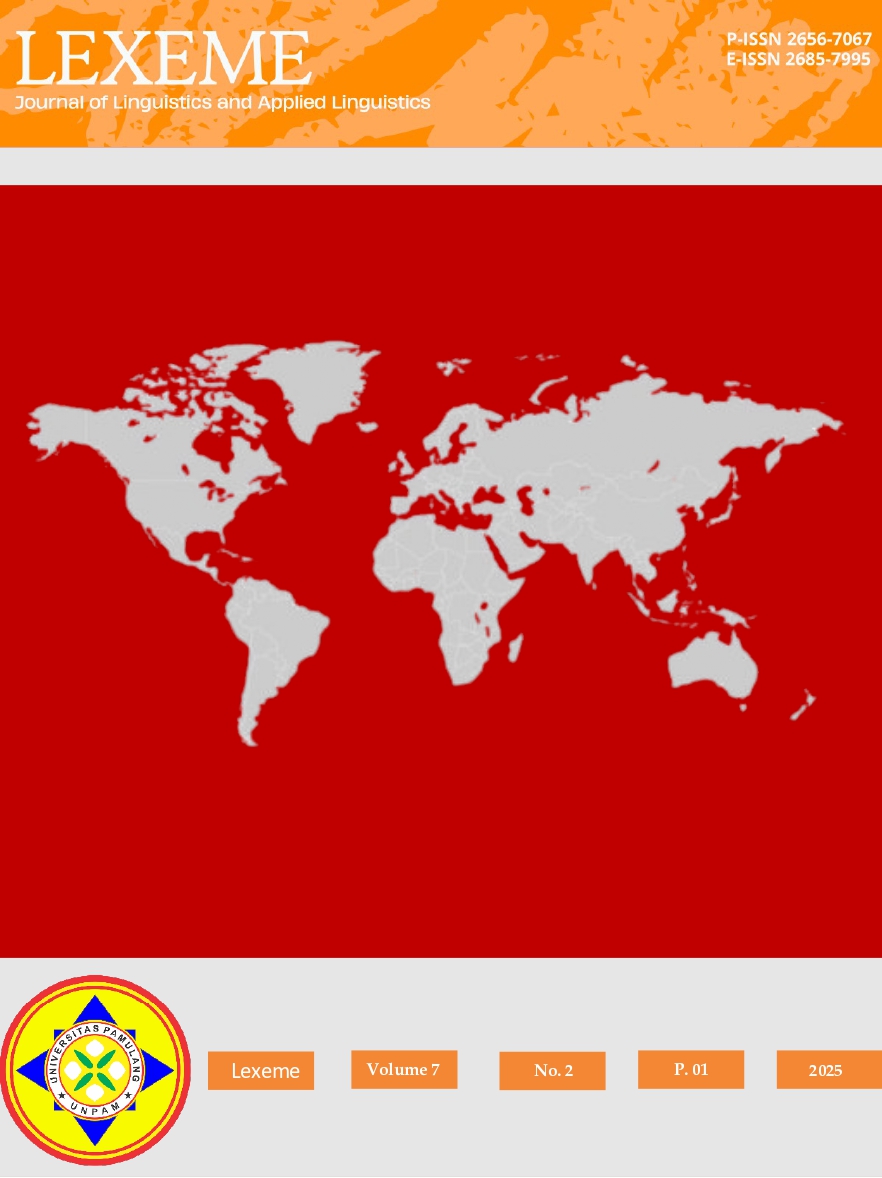An Analysis of Comparison on Observation Permission Letters in Selected Departments at USU: A Critical Genre Analysis
DOI:
https://doi.org/10.32493/ljlal.v7i1.46320Keywords:
experiential function, observation permission letter, professional culture, professional practice, rhetorical structureAbstract
This study aims to analyze the comparative observation permit letters from five study programs at the Faculty of Cultural Sciences, University of North Sumatra: English Literature, Indonesian Literature, Mandarin Language, History Sciences, and Ethnomusicology. Using a qualitative descriptive approach, this study utilizes primary data in the form of five observation permit letters and secondary data from interviews with the parties who drafted the letters. The analysis includes internal factors of the text, namely rhetorical structure (move and step) and experiential function, as well as external factors involving professional culture and administrative practices. The results of the study show variations in letter structure, language function, and administrative approach that reflect the academic needs of each study program. The observation permit letter from the Ethnomusicology study program has the most complex structure with 7 moves and 17 steps. External factors, such as organizational hierarchy and professional culture, also influence the design of the letter structure. This study provides insight into how academic institutions compile administrative documents that function as formal communication media between students and external parties. This study also highlights the importance of considering internal and external aspects in the preparation of administrative documents to ensure appropriateness to academic and professional contexts.
References
Bhatia, V. K. (2016). Critical genre analysis: Investigating interdiscursive performance in professional communication. Routledge.
Casal, J. E., & Kessler, M. (2024). Rhetorical structure, sequence, and variation: A step-driven move analysis of applied linguistics conference abstracts. International Journal of Applied Linguistics. 30(3). 82-104. Routledge.
Creswell, J. W. (2014). Research design: Qualitative, quantitative, and mixed methods approaches. (4th ed.). Los Angeles, CA: Sage.
Damanik, E. S. (2018). an Analysis of Experiential Meaning in Poety “William Wordsworth”. Loquen: English Studies Journal, 10(2), 81. https://doi.org/10.32678/loquen.v10i2.695
Halliday, M. A. K. (1978). Language as social semiotic: The social interpretation of language and meaning. Edward Arnold.
Hadavi, M., Marzban, B., & Morady Moghaddam, M. (2015). Analysis of official letters based on applied genre analytical model. Journal of Language Teaching and Research, 6(3), 588–594. https://doi.org/10.17507/jltr.0603.15
Hyatt, D. F. (2005). “Yes, a very good point!”: A critical genre analysis of a corpus of feedback commentaries on Master of Education assignments. In Teaching in Higher Education (Vol. 10, Issue 3, pp. 339–353). https://doi.org/10.1080/13562510500122222
Mathiesen, J., Jamtveit, B., & Sneppen, K. (2010). Organizational structure and communication networks in a university environment. https://doi.org/10.1103/PhysRevE.82.016104
Marcuzzo, P., & Radünz, A. P. (2021). Analisando um teste como gênero: Análise Crítica de Gênero do ENEM de língua inglesa. DELTA Documentacao de Estudos Em Linguistica Teorica e Aplicada, 37(2), 1–25. https://doi.org/10.1590/1678-460X202148640
Motta-Roth, Désirée. (2008). Análise Crítica de Gêneros: contribuições para o ensino de linguagem. DELTA Documentacao de Estudos Em Linguistica Teorica e Aplicada, 24(2), pp. 341-383. https://doi.org/10.1590/S0102-44502008000200007
Motta-Roth, Désirée, & Heberle, Viviane Maria. (2015). A short cartography of genre studies in Brazil. Journal of English for Academic Purposes, pp. 1-10. https://doi.org/10.1016/j.jeap.2015.05.006
Musheke, M. M., & Phiri, J. (2021). The Effects of Effective Communication on Organizational Performance Based on the Systems Theory. Open Journal of Business and Management, 09(02), 659–671. https://doi.org/10.4236/ojbm.2021.92034
Ng, C. W. (2021). Critical genre analysis of principal’s remarks. Linguistica Silesiana, 42, 281–305. https://doi.org/10.24425/linsi.2021.137241
Ode Muh Idrus Hamid, L. B., & Ode Nur Maulid, W. (2017). The Moves and Steps in the Literature Review and Discussion Sections in the Four Master’s Degree Theses. Journal of English Education, 2(1), 51–58. https://usnsj.com/index.php/JEE/article/view/249
Downloads
Published
How to Cite
Issue
Section
License
Copyright (c) 2025 Desna Uli Matanari, Tengku Silvana Sinar\, Yulia Pradinda, Abigail Putri Chrissantha Tarigan, Hani Firlyali Hasan

This work is licensed under a Creative Commons Attribution-ShareAlike 4.0 International License.







